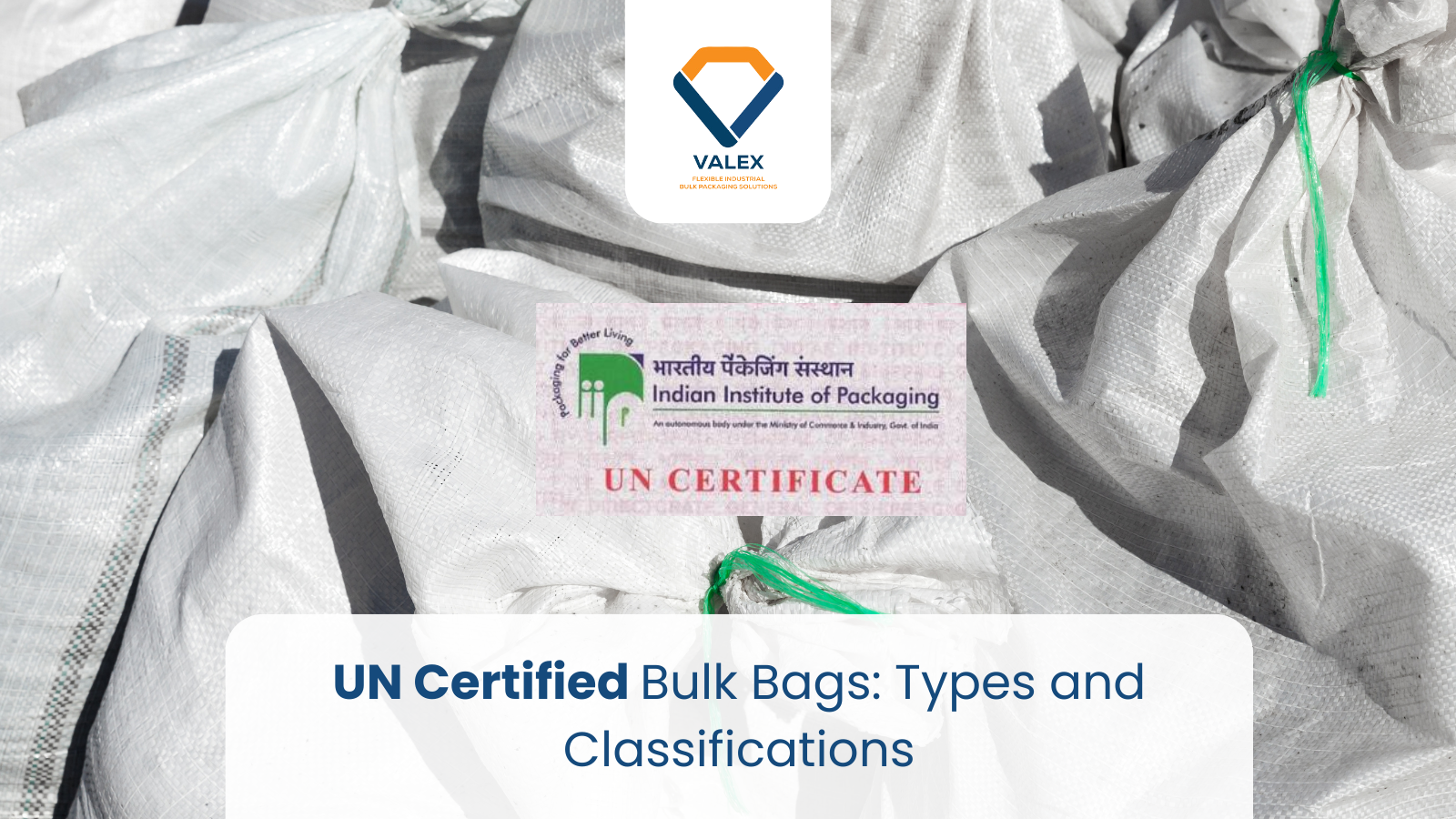Transporting hazardous or regulated materials safely is a top priority for manufacturers, shippers, and logistics teams. UN certified bulk bags provide an independent assurance that a flexible intermediate bulk container meets the United Nations packaging performance requirements for dangerous goods. Here we'll try to explain what UN certification means, how UN certified bags are classified, the difference between UN approval and other FIBC classifications, and practical steps to verify compliance.
UN certification for bulk bags indicates the container has passed a set of standardized tests designed to show it will contain its contents safely under normal transport conditions. A certified bag will carry a UN marking that shows its performance rating and limits for packing groups, maximum gross mass, and relevant test standards. Using UN approved bags reduces the risk of spills, regulatory fines, and supply chain disruptions when handling regulated materials.
The UN Marking

A UN certified bag displays a printed code. That code reveals key facts such as the packaging type, performance level, packing group suitability, and maximum gross mass. Always ask your supplier for the certificate that matches the code printed on the bag.
What the Marking Tells You
Never assume a bag is certified just because it looks robust. Verification of the printed UN mark and the accompanying certificate is essential.
Performance Tests Behind the Mark
To earn a UN mark, a bulk bag undergoes laboratory tests such as:
These tests evaluate whether the bag will perform safely for the intended class of material and transport conditions.
Packing Groups and What They Mean
UN classification links packaging to packing groups that reflect hazard severity. In general terms:
A UN certified bag will state which packing groups it is approved to carry. Choose the bag rated for the highest applicable packing group for your material.
UN Certification vs FIBC Electrostatic Types
FIBC bags are also classified by electrostatic behavior into types A, B, C, and D. Those types address static control and conductive properties for powders that can generate static charges. This is a different classification system from UN approval, which focuses on transport safety. When handling combustible dusts or flammable powders, you need to consider both UN certification and the correct electrostatic type.
UN Certification vs Food Grade or ISO Quality Marks
Food-grade or ISO quality marks address sanitation, traceability, or manufacturing controls. UN certification is specifically about transport safety for hazardous goods. A single bag can carry multiple certifications but always confirm the specific standard you need.
UN Approved Bags for Powders and Granules
These are common in chemical, mineral, and fertilizer industries. Choose a bag whose lining and construction match both the product characteristics and the UN packing group.
UN Approved FIBCs for Solids in Bulk
Bulk solids that are non-flowing or prone to dusting require bags designed for containment and clean discharge. Valve-type UN bags often suit these needs.
UN Certified Bags for Limited Quantities or Specific Modes
Some UN markings specify use with certain transport modes or for limited quantities. Confirm restrictions before shipping internationally.
Verifying UN Certification: Practical Steps
Relying on visual inspection alone is risky. Always validate documentation with the supplier.
UN certified bulk bags provide an essential safety layer when transporting regulated and hazardous products. Understanding UN classifications, required tests, and how these differ from other FIBC types helps you select the correct container and avoid costly compliance issues.
For best UN certified bags and expert support in selecting the right packaging solution, partner with Valex Ventures. As an experienced supplier of UN approved bags and fibc bulk bags, Valex Ventures offers certified products, full documentation, and technical assistance to meet your industrial bag packaging needs.
Contact Valex Ventures today to buy the best UN certified fibc bag for your material and shipment requirements.
What is a UN certified bag?
A UN certified bag is an FIBC that has passed standardized tests and carries a UN mark indicating it is approved for transporting certain classes and packing groups of regulated materials.
How do UN classifications for FIBC differ from electrostatic types?
UN classifications address transport safety and packing group suitability. Electrostatic types A, B, C, D address static control. Both may be needed depending on the product.
Can UN certified bags be reused?
Some UN certified bags are single use and some are reusable, but reuse must be explicitly permitted by the bag's certification, inspection records, and your internal safety procedures.
How do I verify a UN approved bag?
Check the printed UN mark, request the certification documents and test reports, and confirm batch traceability with your supplier.
Are UN-certified fibcs bags required for all hazardous goods?
Many hazardous or regulated materials require UN certified packaging. Regulatory requirements depend on the material class and the destination, so consult regulations and your transporter.